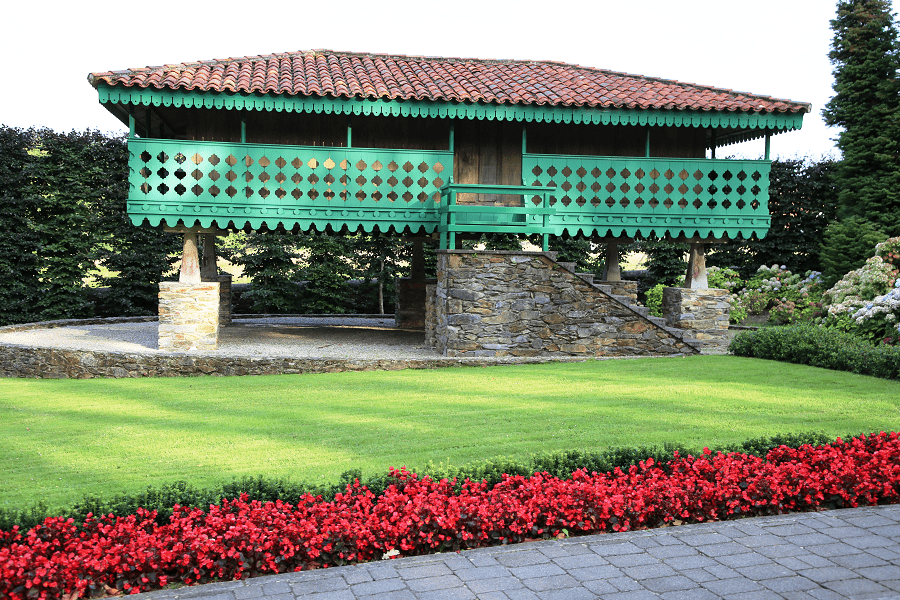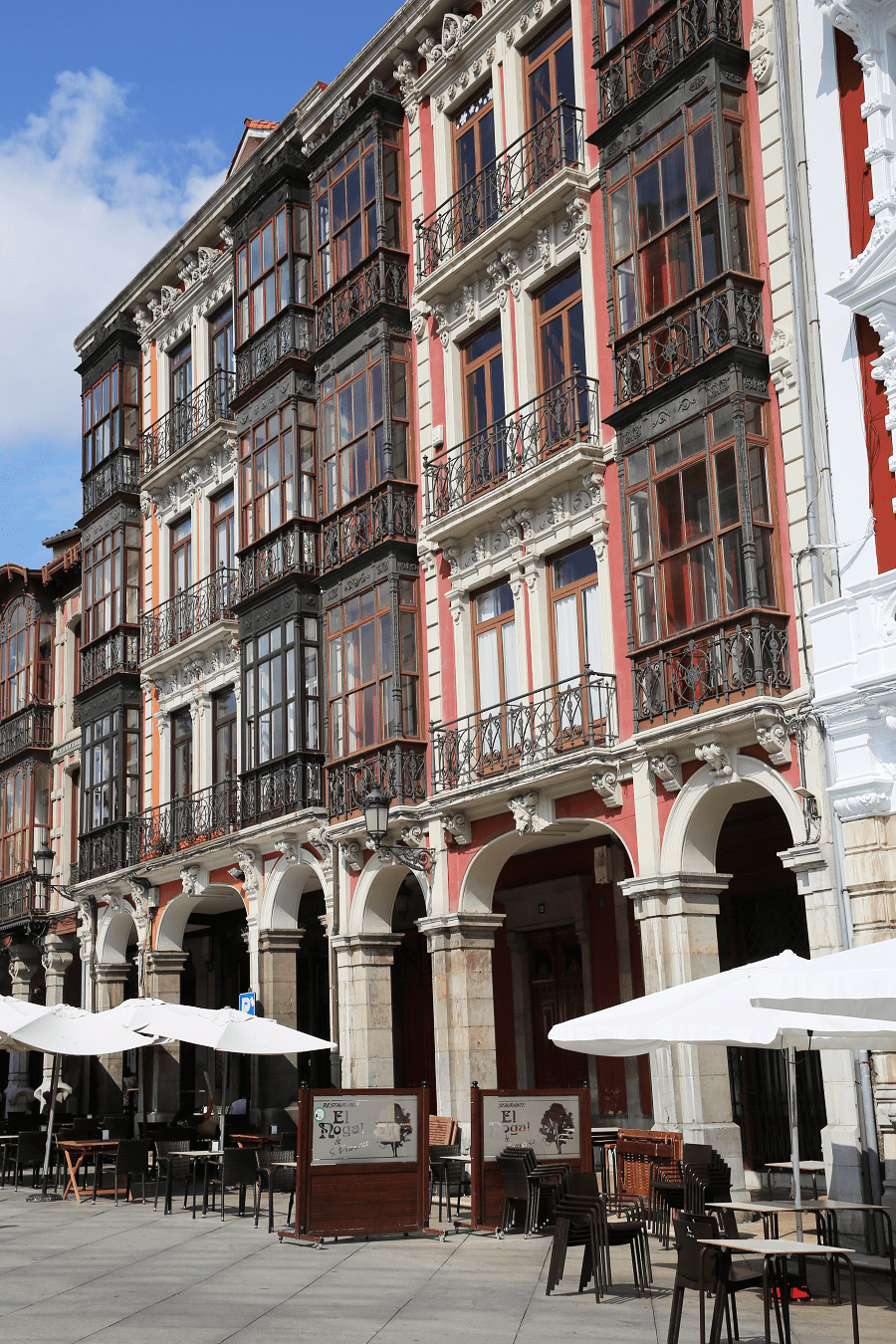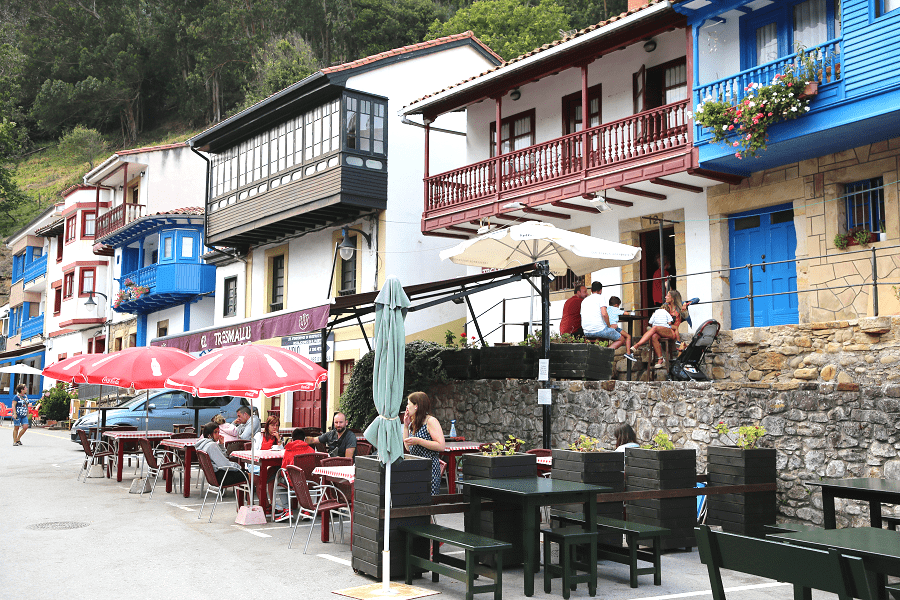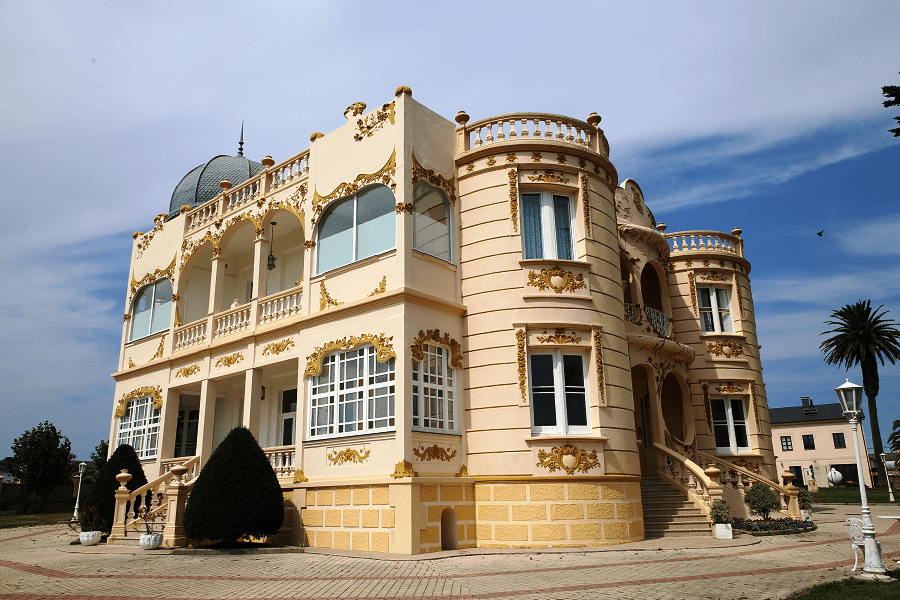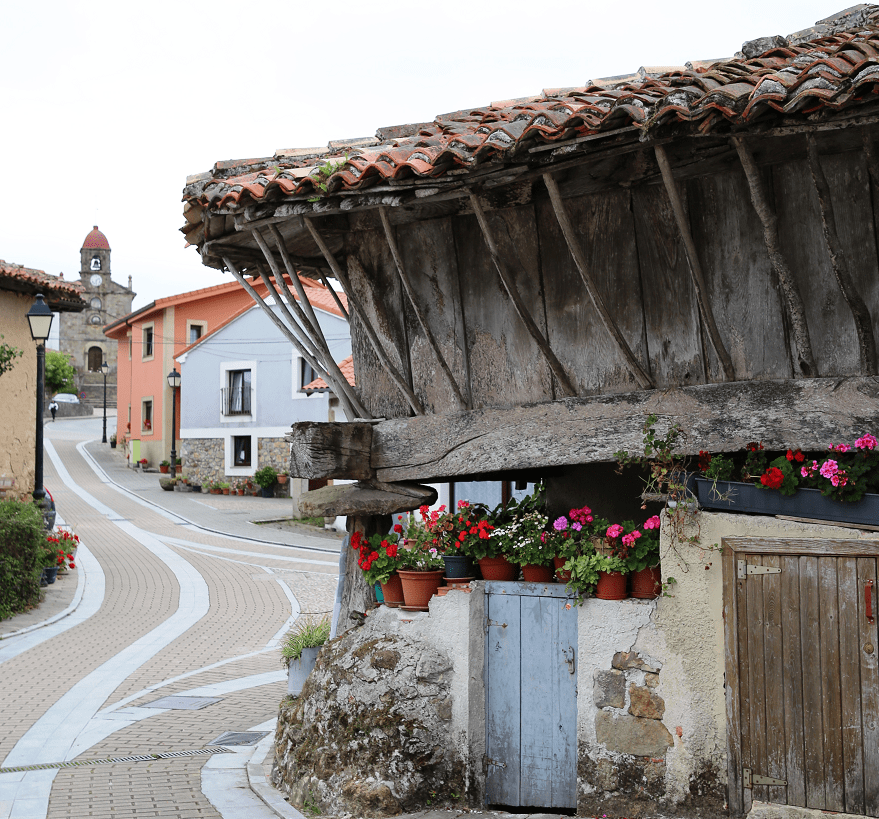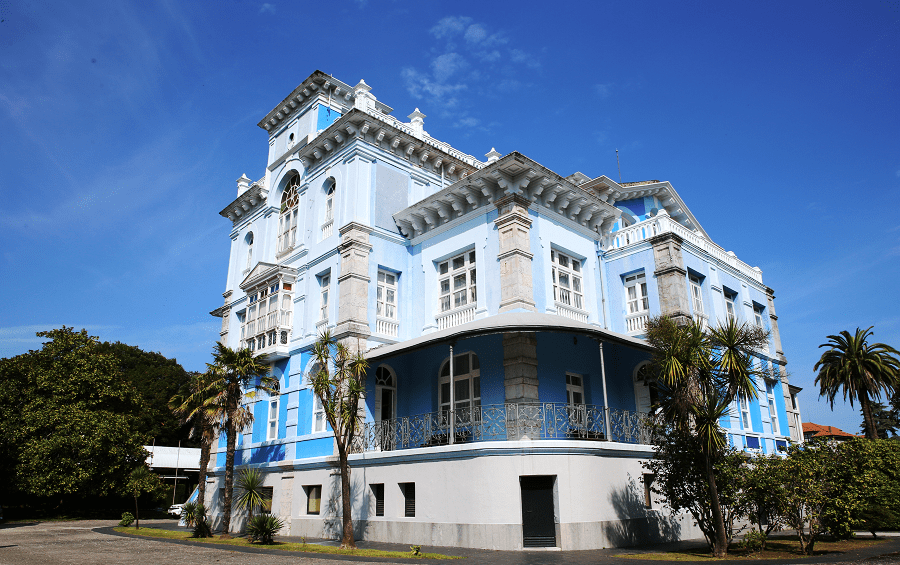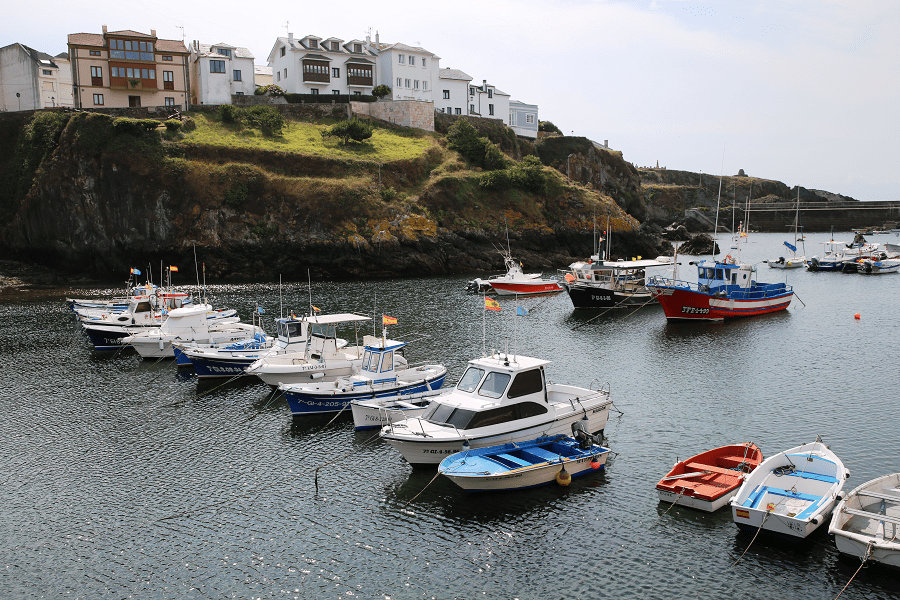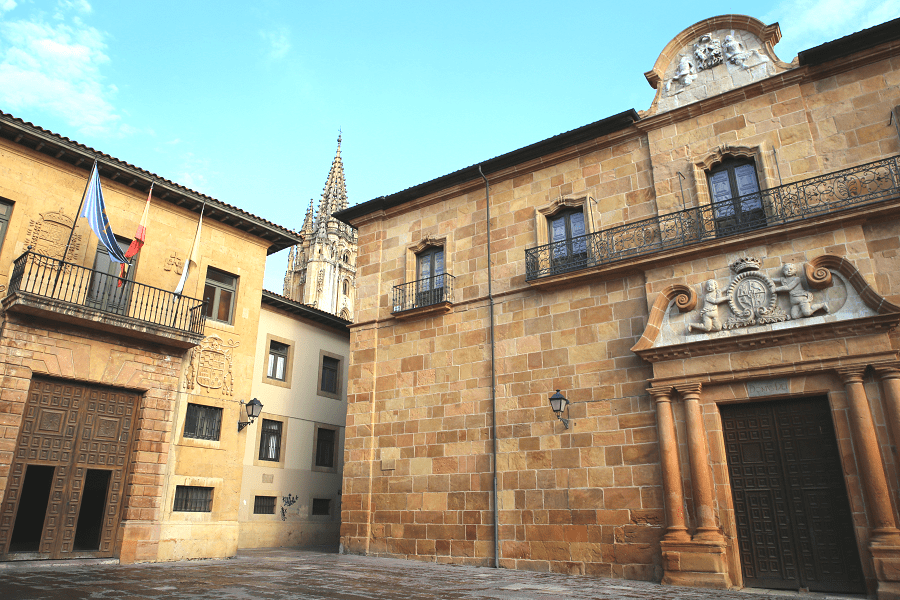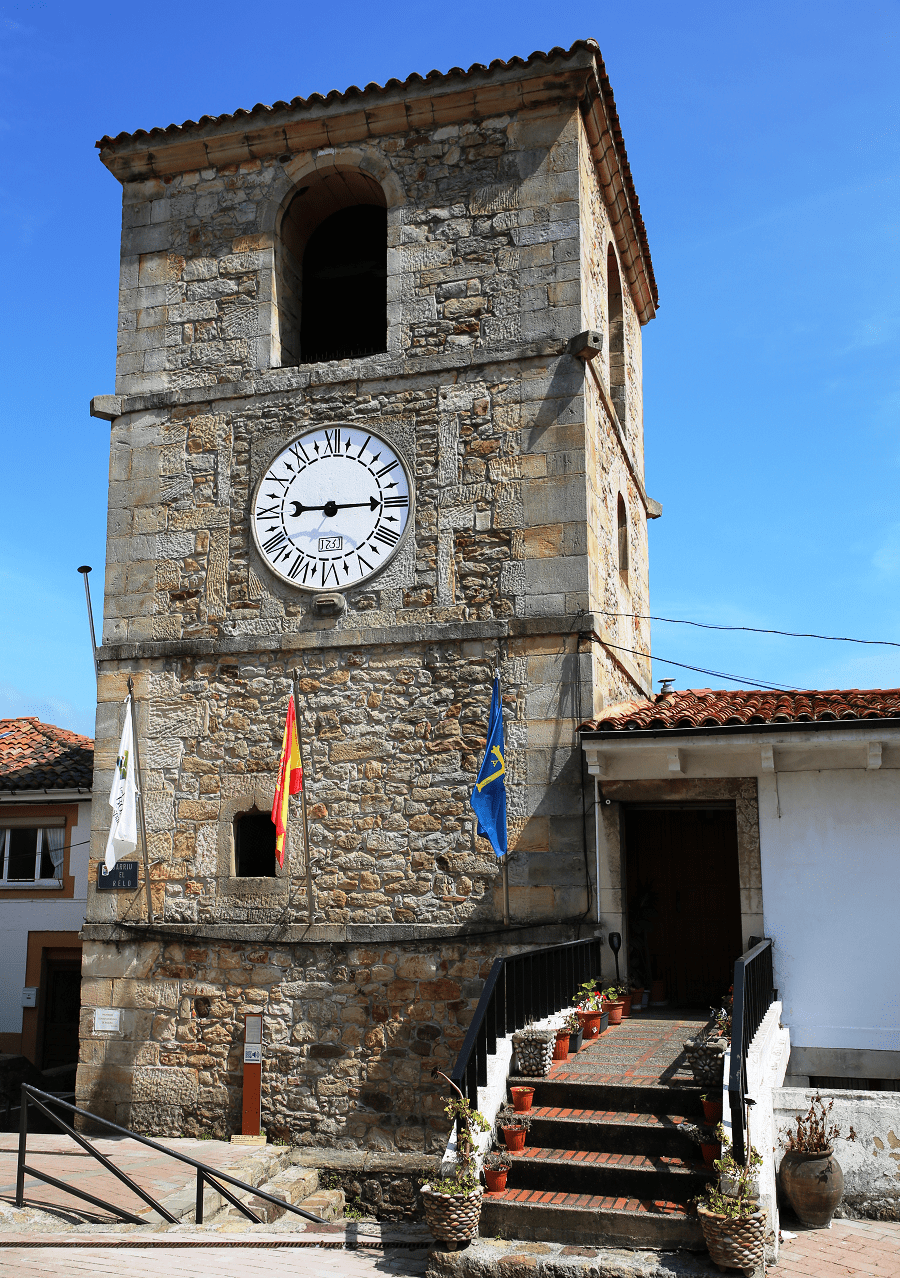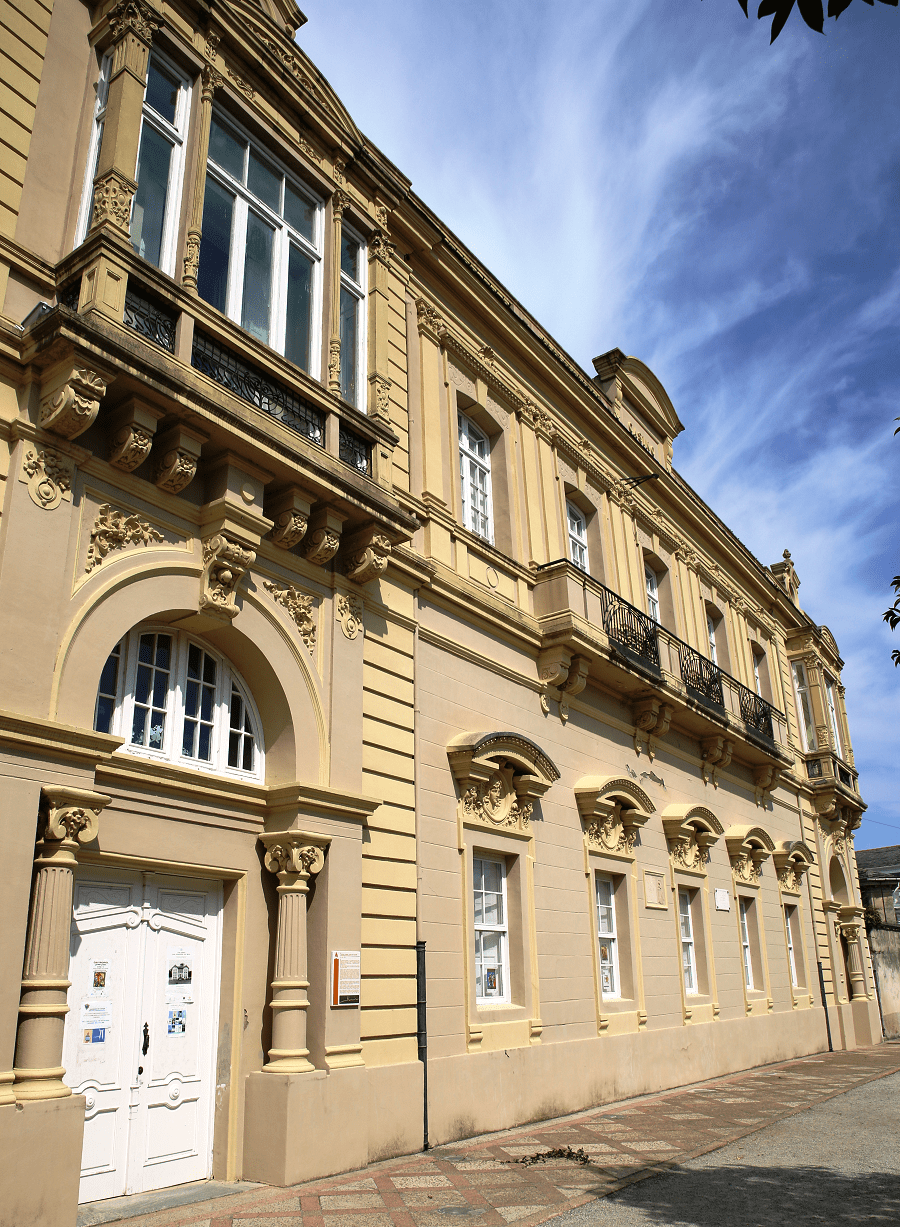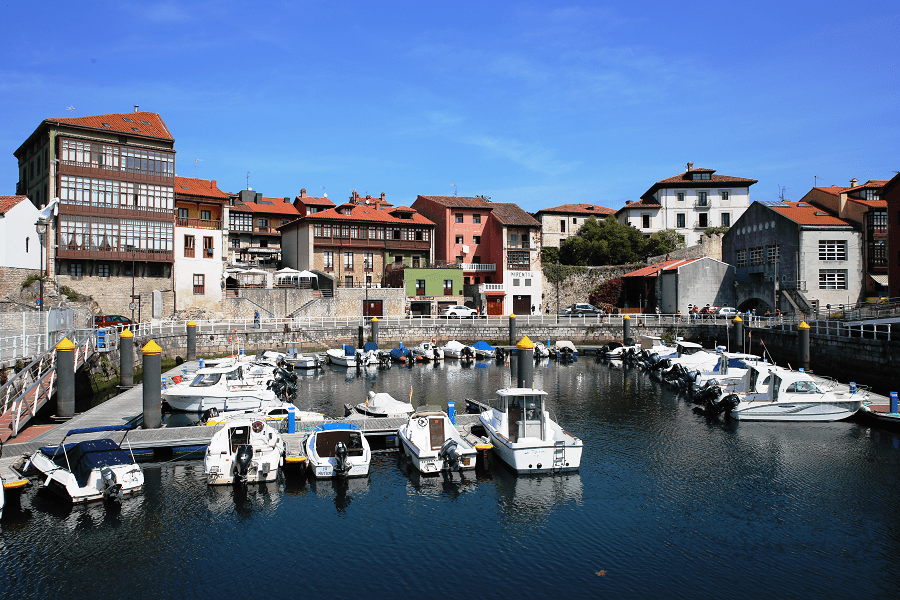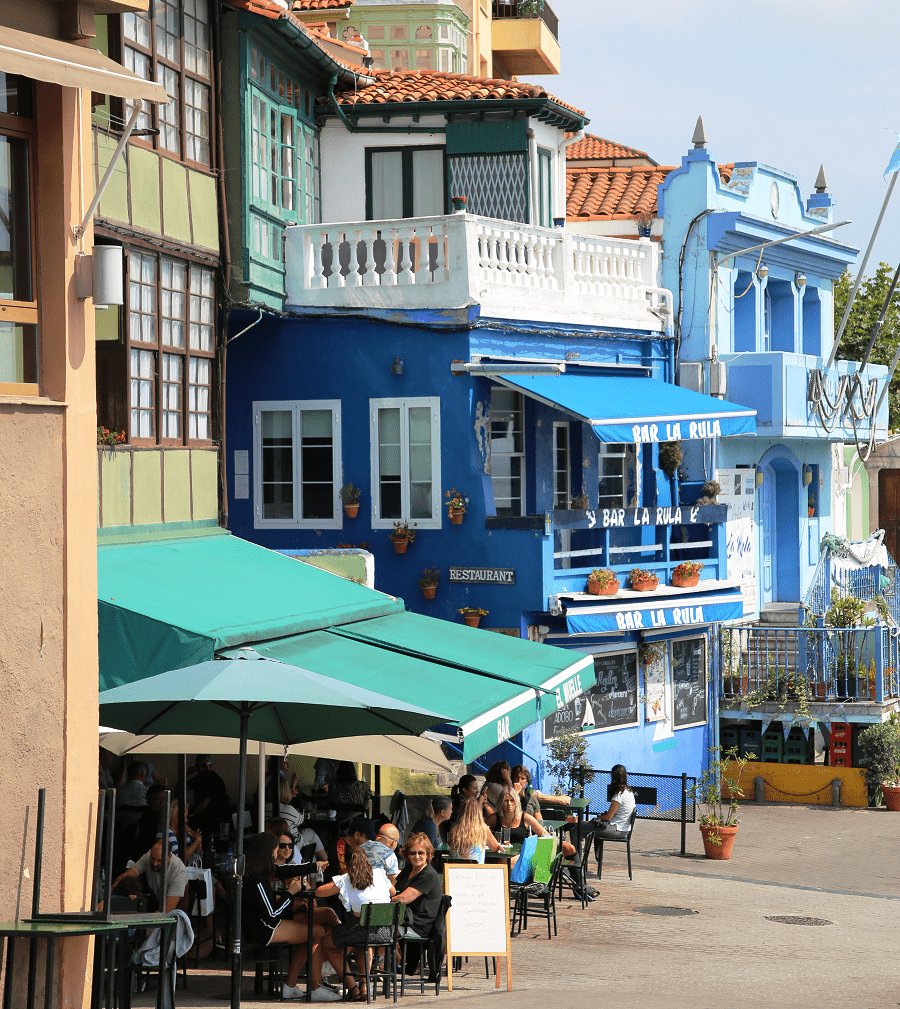Asturias, officially the Principality of Asturias (Spanish: Principado de Asturias; Asturian: Principáu d’Asturies; Galician-Asturian: Principao d’Asturias), is an autonomous community in northwest Spain.
Oviedo is, according to the Statute of Autonomy, the capital city and a seat of the institutions of the Principality of Asturias. It is the most populated city in the Gijón region.
The Asturias province contains some of the territory that was part of the larger Kingdom of Asturias in the Middle Ages. Divided into eight comarcas (municipalities), the autonomous community of Asturias is bordered by Cantabria to the east, by Castile and León to the south, by Galicia to the west, and by the Cantabrian Sea to the north.
The Principality of Asturias, according to its Statute of Autonomy, is considered a historical community in its Article 1. It has a legislative assembly called the General Board of the Principality that honors an old medieval institution of representation of the councils before the Crown.
It is partly a territory of the ancient kingdom of Asturias from the year 718 and has two languages of its own: Asturian or Bable, from the Asturian-Leonese linguistic base – which, although not considered an official language, has a legal status. The Eonaviego, or Galician-Asturian language from the Galician-Portuguese linguistic base, is spoken in the most westerly municipalities and enjoys a similar status.
Asturias is also home of the Princess of Asturias Awards.
Tourism and Main Attractions
First of all, the region is known for its sea resorts. Costa Verde (Green Coast) is the tourist name assigned to the coast of Asturias located in the Cantabrian Sea and Atlantic Ocean. It includes the coast of the maritime province of Gijón created in 1845, and maritime province of Avilés, created in 2007.
It borders with the Rías Altas resorts (Galicia) in the west and the Costa Cantabria resorts (Cantabria) in the east.
Although August is considered the hottest month of the year, the swimming season begins in June. Many tourists come here not only for beach holidays and sightseeing, but also for surfing, diving, and other water sports.
The Asturian coastline is extensive – featuring hundreds of beaches, coves, and natural sea caves. Notable examples include the Playa del Silencio (Beach of Silence) near the fishing village of Cudillero (west of Gijón), as well as the many beaches surrounding the summer resort of Llanes, such as the Barro, Ballota and Torimbia (the latter a predominantly nudist beach). Most of Asturias’s beaches are sandy, clean, and bordered by steep cliffs, on top of which it is not unusual to see grazing livestock.
Asturias has a rich artistic legacy that emphasizes Romanesque (Asturias Arts), as well as indigenous architecture with monuments like Santa María del Naranco, Santa Cristina de Lena, and San Miguel de Lillo. These monuments have a Ramirense Romanesque style (because of Ramiro I). San Julián de los Prados, known as Santullano (Oviedo) features an Alfonsino pre-Romanesque style (due to Alfonso II), which are all located in Oviedo.
Other examples of architecture are Villaviciosa’s church, San Salvador de Valdediós (commonly known by the Asturians as “Conventín”), and the church of San Salvador de Priesca. Another example is Cabranes’ San Julian de Viñón.
The Romanesque style is very present, since all Asturias is crossed by one of the Camino de Santiago routes, which highlights the Monastery of San Pedro de Villanueva (near Cangas de Onis), the churches of San Esteban de Aramil (Siero), San Juan de Amandi (Villaviciosa), and Santa María de Junco (Ribadesella).
The Gothic style is not as abundant, but there are prominent examples of this style, such as the Cathedral of San Salvador in Oviedo.
The Baroque style is more present throughout the palace architecture, with such notable examples as the Palace of Camposagrado and Velarde – the latter seat of Museum of Fine Arts of Asturias. The Baroque style stands out in public civil engineering and bridge tolls (Olloniego) as well as the milestones and the seating along the road to Madrid and the resort of Caldas de Priorio (Oviedo) building.
In 1985, UNESCO declared the pre-Romanesque monuments and the Cathedral of Oviedo as World Heritage Sites.
In popular architecture, the traditional granaries in Asturias, called hórreos, are known for their demographic extension and their functional evolution. A distinct and convenient characteristic is its mobility: it can be easily dismounted and transported to another location. The Panera is the evolution of the hórreo, with examples exceeding 100 square metres (1,076 square feet) of area covered. The purpose of the hórreo is to store objects and crops.
With the arrival of maize and the beans, they were endowed with exterior corridors and railings for drying the harvests.
Asturias is home to the only architectural work in Spain – as well as the largest in Europe – of the Brazilian architect Oscar Niemeyer who was the disciple of Le Corbusier. This is why it was named the Oscar Niemeyer International Cultural Centre. The architectural project was donated to the Principality by the architect, who was awarded the Prince of Asturias Award for the Arts, in the XXV edition of these awards. Niemeyer’s project combined several different elements, and projected an open space, a place for education, culture, and peace.
TOP places to visit (in alphabetical order)
Avilés – a Historic-Artistic Site
As Figueiras and its attractions
Gijón – the capital of the Green Coast
Indiano Archive Foundation and its museum
La Quinta de Selgas – Asturian Versailles
Llanes and the Gulpiyuri – shortest beach in the world
Oviedo – the capital of the Principality of Asturias
Ribadesella and the International Descent of the Sella
Sanctuary of Covadonga – cradle of Spain
Tapia and its Peñarronda beach
Tazones – the Historic-Artistic Complex
Torazu and its rural architecture
Natural Parks
Asturias is a mountainous and coastal community that has numerous and well-known natural enclaves, some of them protected under different figures.
These include those recognized by UNESCO as biosphere reserves:
- The Integral Natural Reserve of Muniellos – in the southwest of Asturias, between the councils of Cangas del Narcea and Ibias
- The natural park of Somiedo – in the homonymous council
- The Redes Natural Park – in Caso y Sobrescobio
The Picos de Europa National Park, which also extends to the neighboring communities of Cantabria and Castilla y León:
The natural park of Las Ubiñas-La Mesa, in the municipalities of Lena, Quirós and Teverga.
The one of the River Eo, Oscos and Lands of Burón, distributed between the Lands of Burón – in Galicia – and the Asturian councils of Castropol, Vegadeo, Taramundi, San Tirso de Abres, Villanueva de Oscos, Santa Eulalia de Oscos and San Martín de Oscos.
The natural park of Fuentes del Narcea, Degaña and Ibias. It is located in the municipalities of Degaña, Cangas del Narcea and Ibias, and also includes the Muniellos Integral Nature Reserve.
Cuisine and Gastronomy
While Asturias is especially known for its seafood, the most famous regional dish is fabada asturiana, a rich stew typically made with large white beans (fabes), shoulder of pork (lacón), black pudding (morcilla), and spicy sausage (chorizo).
Apple groves accommodate the production of the region’s traditional alcoholic drink, a natural cider (sidra).
Asturian cheeses, especially Cabrales, are also eaten throughout Spain and beyond – Asturias is often called “the land of cheeses” (el país de los quesos).
Economy
For centuries, the backbone of the Asturian economy was agriculture and fishing. Milk production and its derivatives was also a traditional industry, but its big development was a byproduct of the economic expansion of the late 1960s. Nowadays, products from the dairy cooperative Central Lechera Asturiana are being commercialised all over Spain.
The main regional industry in modern times, however, includes coal mining and steel production. This is in contrast to the times of Francisco Franco’s dictatorship, when it was the centre of Spain’s steel industry. The then state-owned ENSIDESA steel company is now part of the privatised Aceralia, now part of the ArcelorMittal Group. The industry created many jobs, which resulted in significant migration from other regions in Spain, mainly Extremadura, Andalusia.
Education
Asturias has a public university, the University of Oviedo, promoted by the inquisitor general Fernando Valdés Salas at the end of the 16th century, who had already founded the Colegio de San Gregorio, for the study of Grammar and Latin and the Colegio de Niñas Huérfanas Recoletas. The university was launched in 1607. Today it has numerous campuses spread between Oviedo and Gijón. It has 20,000 students a year and its medical and engineering faculties stand out, as well as its Erasmus programs.
Asturias also has private university schools. Vocational training education in Asturias has its origins in master’s schools founded by industrial companies since the late nineteenth century, highlighting today several vocational training campuses in Oviedo, Gijón, Avilés, and Langreo.
Festivals
Asturias hosts many festivities, especially from spring (when the “corks” of cider known as spikes take place, where drinks and food are served) and throughout the summer. Pilgrimages are also famous, also known as festivals of prau or folixes, celebrated in multitude of villages, towns, and villas. The busiest are El Carmín in Pola de Siero, El Xirigüelu in Pravia, and San Timoteo in Luarca, which have thousands of attendees.
Also noteworthy are the most urban festivals such as San Mateo in Oviedo, the Semana Grande de Begoña and the Semana Negra in Gijón or the Fiestas del Bollu and San Agustín in Avilés. The Carnival or Antroxu is celebrated in all the Asturian localities, being especially concurred the one of Avilés with the Descent of the Galiana street, and those of Oviedo and Gijon. Holy Week has many religious acts.
It is worth noting the International Descent of the Sella which is celebrated on the first Saturday of August between Arriondas and Ribadesella, with a distance of 20 km, a festival declared of International Tourist Interest. This is the busiest festival in Asturias, with hundreds of thousands of attendees each year.
The festivities of the Cider Festival in Nava, the Day of Asturias in Gijón, the Descent to Swim event of the estuary of the Navia, Our Lady of the Rosary in Luarca, and the celebration of the Virgin of the Guide in Llanes are all declared of national interest and America’s Day in Asturias in Oviedo.
Many others are declared of regional interest, such as the Nalón Folk Descent, the Descarga de Cangas and several gastronomic days and pilgrimages.
Institutionally, the official holiday of the autonomous community is celebrated on September 8, as well as the feast of the Virgin of Covadonga. This date was proclaimed Asturias Day in 1984 and has the character of a regional holiday and, therefore, a non-working day. It is held yearly in the town, determined by the Governing Council of the Principality of Asturias.
On the other hand, the Princess of Asturias Awards are presented annually by the Foundation of the same name in Oviedo, where many famous people have received their eminence awards in science, arts or sports, including Woody Allen, JK Rowling, Stephen Hawking, Susan Sontag, Annie Leibovitz, Paul Auster, Nelson Mandela, Francis Ford Coppola, Mary Beard, Leonard Cohen, Martina Navratilova, Norman Foster or Pedro Almodóvar among many others.
Transport and how to get to?
Airports
Asturias Airport, (IATA: OVD, ICAO: LEAS) is the only international airport of Asturias. Traffic consists primarily of scheduled domestic flights and some seasonal scheduled international flights. The airport is located in Anzu, parish of Santiago del Monte, municipality of Castrillón, 15 km from Avilés, 40 km from Gijón and 47 km from the regional capital, Oviedo.
Road – The airport may be reached by both the A-8 motorway and the N-632 national road.
Bus – Alsa coach company offers a service between the airport and the cities of Avilés, Gijón and Oviedo. Some routes also stop in Piedras Blancas and Salinas.
Taxis – These are available at the airport.
Car Rental Services – Avis and Hello Rent a Car.
Seaports
El Musel is a seaport located in the middle point of the Cantabrian Sea coast, it is the Port of Gijón as a gateway to Europe through the A-66 and A-8 highways, allowing direct access to the west and centre of the Iberian Peninsula.
The Port of Gijón is the top dry bulk port in the Spanish port system, with an average annual traffic of more than 20 million tons in the last years.
Trains
Spain’s national RENFE rail network also serves Asturias well; trains regularly depart to and from the Spanish interior. Major stops are the regional capital, Oviedo, and the main coastal city, Gijón. Meanwhile, the FEVE rail company links the region’s centre with Eastern and Western Asturias. Under the Cantabrian Mountains, the Pajares Base Tunnel is currently under construction and will reduce the journey time from Madrid to Asturias from 5 to 3 hours. This will pave the way for the arrival of AVE trains in the near future.
Bus
There is also a comprehensive bus service run by the ALSA company. It links Avilés, Gijón, Oviedo with Madrid and other major towns, several times a day. These include services to Barcelona, Salamanca, León, Valladolid, A Coruña, Bilbao, Seville, San Sebastián, Nice (France), to name just a few.
By car
Distance by car to other capital cities of Spain:
From Madrid 4 hr 29 min (446 km) via A-6
From Santiago de Compostela 3 hr 13 min (323 km) via A-8
From Santander 2 hr 2 min (192 km) via A-8
From Vitoria-Gasteiz 3 hr 37 min (344 km) via A-8
From Pamplona 4 hr 28 min (435 km) via A-8
From Zaragoza 5 hr 39 min (583 km) via AP-68 and A-8
From Barcelona 8 hr 43 min (884 km) via AP-68 and A-8
From Valladolid 2 hr 59 min (257 km) via N-601 and AP-66
From Toledo 5 hr 24 min (505 km) via A-6
From Valencia 7 hr 57 min (804 km) via A-3
From Mérida 5 hr 32 min (586 km) via A-66
From Murcia 7 hr 54 min (850 km) via A-6
From Seville 7 hr 32 min (777 km) via A-66
From Logroño 4 hr 16 min (424 km) via A-231
Main information
Area: 10 603,57 km²
Coordinates: 43°20′00″N 6°00′00″W
Population: 1 018 784
Languages: Spanish (Asturian has special status)
Currency: Euro
Visa: Schengen
Time: Central European UTC +1



